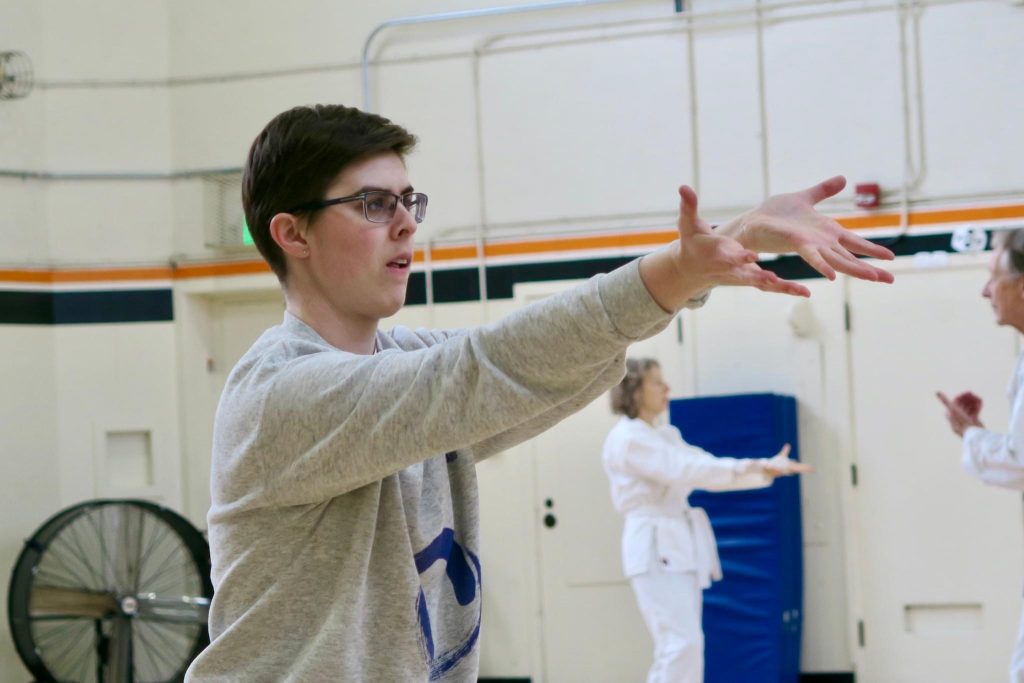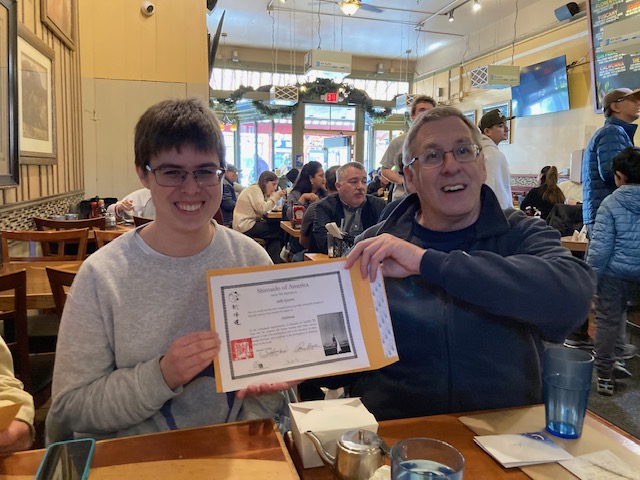by Sally Gaston
When Connie asked if I would be willing to write a “Body Dialogue” article about my experiences in practicing Shintaido these last few years and my decision to challenge boh and Shintaido exams I did not entirely know where to begin.

Shintaido has always been part of my life—the people in many ways even more so than the practice. However, my experience with boh has been the part of my Shintaido experience almost solely as an adult, but also opens up the side of Shintaido that relates most heavily back to my experiences in other types of body movement.
Jim’s Sunday classes where I would read or sleep or occasionally participate in my childhood were primarily Shintaido, as generally was our Kangeiko.
My Dad taught boh when I was younger that I did not attend.
Boh has always appealed to me, especially kata, since I grew up doing ballet and that type of repeated practice is a way of learning and exploring body movement that is quite familiar to me.
I don’t remember what my initial thoughts were when my dad suggested I take a boh exam, but I think it was useful to have something specific to prepare for. It also forced me to learn the names of the movements I was doing—something that has not entirely been my strong suit.

Taking Shintaido exams was a similar experience. A lot of Shintaido movement is deeply embedded in my body and my being from years of exposure, but learning and remembering the movement names sometimes adds an element of understanding; sometimes philosophically and sometimes practically. Pushing myself to become comfortable in other things such as leading warmups and helping organize the boh workshop in June has helped as well, tying me in to the rhythm and practice of the bigger picture of keiko.
I cannot say that I have entirely achieved a coherent summation of my experience in Shintaido as an adult, but I think this mirrors my relationship with my own practice. I feel that I find myself frequently having two different experiences of Shintaido happening at the same time; on one hand, a raw beginner while also having it deeply imbedded in my body and psyche. This is, I think, why Shintaido remains so difficult for me to explain to others—I am too close to it while also still making my way in from the fringes.
I am not sure where I go from here, but I am excited to experience the International Gasshuku in England this summer. I think the experience will help me both in my practice and perspective. I look forward to continuing to deepen and develop my relationship with Shintaido and finding out where it takes me.



